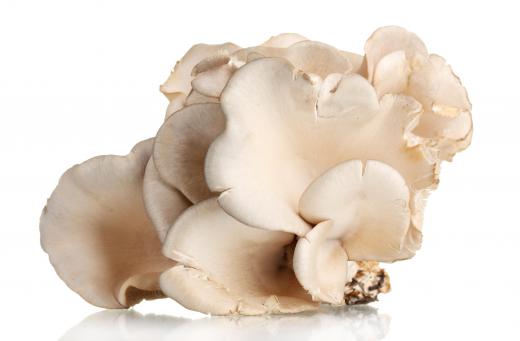What are Spores?
 Michael Anissimov
Michael Anissimov
A spore is a unit of asexual reproduction adapted to spending a long period of time in unfavorable conditions before developing into an offspring of the plant, algae, fungi, or protozoan that created it. They are somewhat like seeds, but contain fewer nutrients, and are used by groups besides plants. Spores are used most frequently by r-selected species — that is, species whose evolutionary strategy is quick reproduction and high reproductive rate rather than quality of each individual. Such species do best when environments are unstable and rapidly changing, though they also exist in stable environments.
Spores first evolved at least 1,600 million years ago, as they are used by some red algae. They can be contrasted with gametes; whereas gametes (like human eggs and sperm) need to combine with another gamete to create an individual, spores need to combine with nothing, and can independently grow into an adult organism as long as conditions are suitable. Spores are usually unicellular, measuring between 4 and 20 micrometres (microns) in size. In the process of cell division between the spore stage and the adult stage, the mass and volume of the organism may increase by a factor of billions or trillions. A large fern may have tens of trillions of cells.

In everyday experience, spores are associated most closely with fungi, especially mushrooms and molds. A single mushroom may release millions or billions of spores, much like how a single drop of human ejaculate contains millions of sperm. When it comes to reproduction in nature, redundancy is a good thing. Smaller organisms that release them, such as unicellular fungi, algae, and protozoans, will release fewer, as few as one at a time. Many organisms that release spores and reproduce asexually also have the ability to reproduce sexually, which they do by releasing gametes. Gametes are similar but only have half a genome — they require another to produce a full genome. In fungi, gametes are sometimes also referred to colloquially as spores.

The earliest land plants reproduced exclusively via spores, as do their descendants today. These are called seedless plants, and include hornworts, liverworts, mosses, ferns, fern allies, clubmosses, and several extinct groups. Aside from the presence or absence of vascular tissue, other primary feature used to classify plants is whether they reproduce using this method or not. The earliest spore-using plants evolved about 470 million years ago, in the Ordovician. Their fossilized spores are the concrete earliest example of multicellular life on land.
AS FEATURED ON:
AS FEATURED ON:















Discussion Comments
@dinoleash- I’m not really sure if this will answer your questions but I’ll try. There are certain spores that are being used for recreational purposes, such as Psilocybe mushroom spores. The spores themselves do not contain the psilocin so they can’t make them illegal in most jurisdictions. However, some states have prohibited the sale of the psilocybin mushroom spore because they consider it to the used in drug manufacturing.
Don’t get me wrong. Not all spores are like that. I was just trying to think of reason that they have gotten a bad rep.
I always heard that spores were bad in some way. This article doesn't make them seem bad at all. Why do people associate spores with something negative?
Post your comments